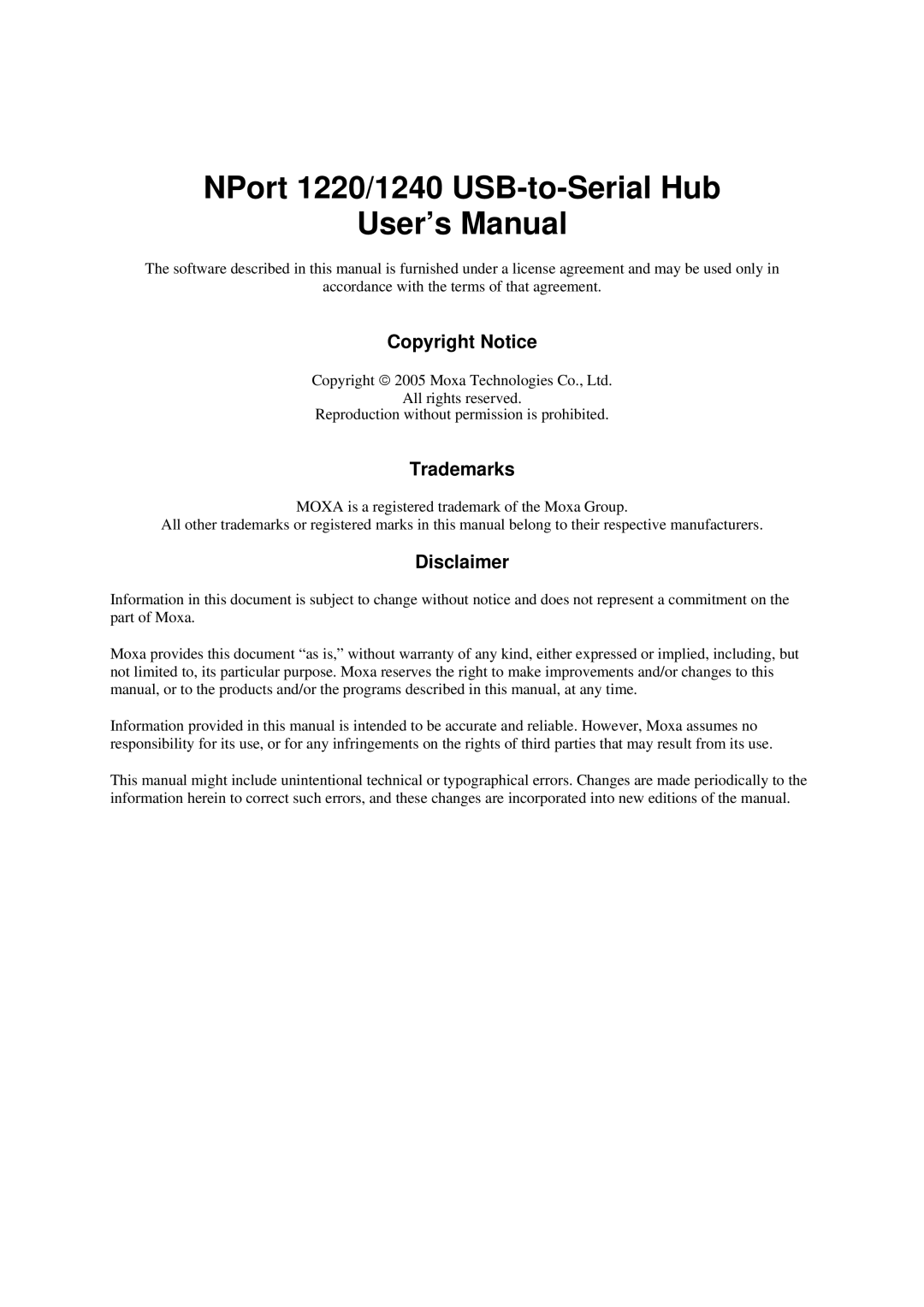1240, 1220 specifications
Moxa Technologies is a well-respected name in the world of industrial networking and communication products. Among its offerings, the Moxa EDS-1220 and EDS-1240 series of Ethernet switches stand out for their robustness and reliability in demanding environments. These devices are designed to ensure seamless communication in various industrial applications, from factory automation to transportation and beyond.The Moxa EDS-1220 is a 10/100 Mbps, unmanaged Ethernet switch featuring 8 Ethernet ports. Its compact design enables easy integration into existing networks without requiring extensive modifications. This switch is particularly valued in scenarios where space is limited, yet performance cannot be compromised. On the other hand, the EDS-1240 expands on this, boasting 24 ports which can accommodate larger infrastructures that demand higher levels of data transfer.
One of the main characteristics of both switches is their durability. They are built to withstand harsh environmental conditions, including extreme temperatures ranging from -40°C to 75°C. This makes them ideal for different industrial settings, such as factories, power generation sites, and transportation networks, where temperature fluctuations can be severe. Moreover, both switches come with a fanless design, ensuring silent operation while enhancing their longevity.
Technologically, these switches utilize Store-and-Forward switching, which allows them to efficiently manage traffic and reduces the possibility of packet collision. They support various Ethernet standards, ensuring compatibility with a wide range of devices and protocols. Importantly, both models offer support for VLANs (Virtual Local Area Networks), enabling users to segment network traffic for better performance and security.
The EDS-1220 and EDS-1240 also feature LED indicators for power, port status, and link activity, providing easy monitoring of network conditions. Their installation process is user-friendly, with simple plug-and-play capabilities that reduce deployment time and complexity.
In summary, Moxa Technologies' EDS-1220 and EDS-1240 series Ethernet switches are exceptional choices for any industrial networking requirement. Their robust construction, advanced technological features, and versatility make them suitable for a wide array of applications, ensuring reliable communication in an ever-evolving industrial landscape. As businesses continue to innovate, Moxa's commitment to quality and performance remains a critical asset in achieving successful and efficient operations.
